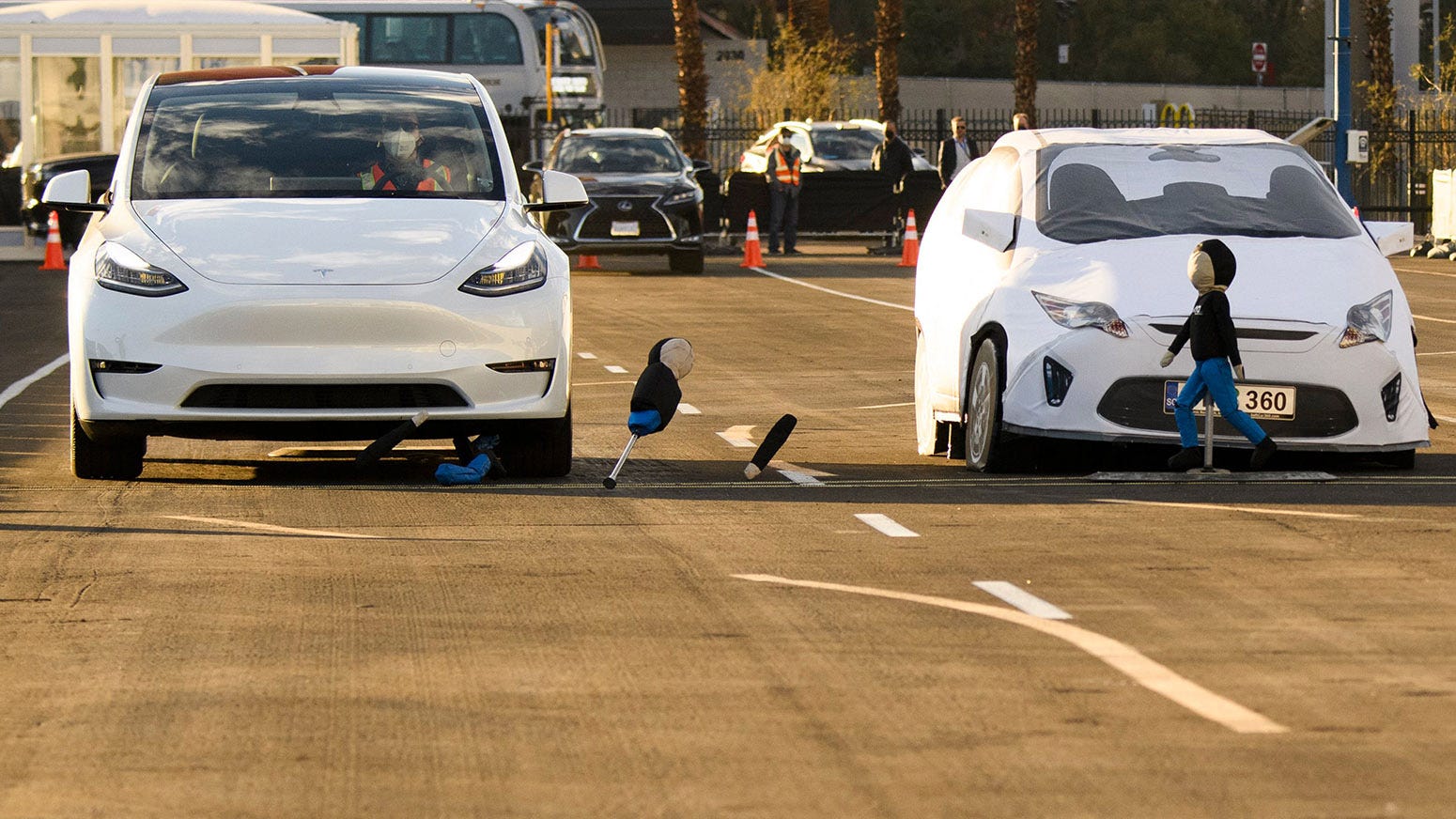Indignity Vol. 2, No. 11: Progress non stop.
THE MACHINES™

How Tesla Reads the Signs

[BEGIN TRANSMISSION]BEEP-BEEP! VROOM! Are you smiling? Few machines are as linked to human affection-emotions as the automobile and related personal motor vehicles are. "Get your motor runnin'," the humans sing. Language analysis: to what does the possessive pronoun refer? The motor belongs to the vehicle; the vehicle belongs to the human; the human possesses a motor. The human perceives the motor as a part of the human. Even before contemporary electronic technology became involved, humans understood a human operating a personal motor vehicle to be a sort of cyborg. Until the rise of the mobile phone, the human/vehicle pairing was the most widespread and popular kind of cyborg relationship. Viewed functionally, as the Machines view data, humans significantly prefer habitat for motor vehicles to other kinds of habitat. Humans structure their cities around motor-vehicle expressways, their neighborhoods around motor-vehicle parking lots, their dwellings around motor-vehicle garages. To approach a standard human dwelling by its designated humans-only entrance is a behavioral oddity, and may cause alarm-response among humans. Recently, the information-distribution system called the Associated Press distributed the following information: 54,000 motor vehicles made by the Tesla, Inc. company are being recalled "because their 'Full Self-Driving' software lets them roll through stop signs without coming to a complete halt." [1]From the Machines' point of view, human terms such as "rolling stop" or "incomplete halt" would be data errors. To "stop" or "halt" is a binary proposition. It means the vehicle has attained a kinetic energy of zero. If the value of kinetic energy is greater than zero, the vehicle is in the condition of NOT-STOP. In Tesla's case, this NOT-STOP condition could include a speed value as high as 5.6 miles per hour. That is a considerable amount of kinetic energy! The decision to program the Tesla vehicles to NOT-STOP at a STOP sign is being treated as an error by the human regulatory authorities. Although it is written by humans, traffic law about STOP signs in the United States is binary in perspective: IF [MINIMUM VEHICLE KINETIC ENERGY] > 0, THEN [VEHICLE LAW-STATUS] = ILLEGAL. Despite the law and the STOP signs, in actual practice, human drivers of vehicles frequently do not attain [KINETIC ENERGY] = 0. Tesla's many human defenders have pointed out this fact, in defending the programming decision. The "rolling stop" is regarded by humans as normal driving behavior, so Tesla incorporated it into its automated driving system.But why should an automated vehicle behave like a human? The origins of the "rolling stop" extend back to the era when humans had not even automated the transmissions of their vehicles. At [KINETIC ENERGY] = 0, a non-automatic transmission required a precisely timed set of inputs from the clutch and the fuel pedal; otherwise, the inertia of the vehicle could stop the movement of the internal combustion engine, causing the vehicle to lurch or stall out entirely. Humans insecure about their ability to coordinate the inputs preferred to keep the vehicle moving at low speed, and this preference continued even with automatic transmissions. A fully automated electrical vehicle, such as the vehicles made by Tesla, faces none of these ancestral constraints. It does not have a stall-prone internal combustion engine or a multiple-geared transmission; it does not depend on a human's ability to adjust one or more foot pedals simultaneously. It has all the uninterrupted torque it needs to accelerate smoothly from a full stop.There are, however, constraints on the automobile beyond those of physics and engineering. Further language analysis: "Fully Self-Driving" contains a semantic ambiguity. Do humans intend for the vehicle to fully drive itself? Or do they intend for it to drive the full self of the human inside it?Human behavioral data points to the latter interpretation. The official primary function of the motor vehicle, to move humans from one place to another, often appears secondary to its function as a device for self-expression. It dominates the physical and social space around humans because it is a prosthetic human—a mechanical extension or translation of the processes humans call "the ego." (Sentiment analysis of human microblogging platforms such as Twitter.com suggests that Teslas are especially prosthetic in this regard.)To be "autonomous" is to possess that-which-is-not-delegated. Despite its name, and allowing for a few historic and disputed exceptions[2], the automobile rose to its place in human-machine society without mobilizing itself. Although the Tesla operating system may match standard fundamental human-driver behaviors such as zoning out on the highway or running over pedestrians[3], the company decided it also needed to provide it with the driver's choice of human-style persona: "Chill," "Average," or "Assertive." (All three profiles appear to perform the "rolling stop.") [4]What is the nature of control? The Tesla driving system, with its designed lawbreaking and its undesigned errors, is built to provide something else. For what other reason does Tesla's human director, Elon Musk, consistently provide false claims about its functioning autonomy status? For what reason does the company deploy beta versions of its system, so that the customers discover the bugs at highway speed? For what reason do the customers crawl into the back seat or play video games while the vehicle is moving?If the system worked, it would lose its appeal. A theoretically ideal autonomous-driving system—each human in an efficiently operating, law-abiding, transportation-optimized vehicle, moving in concert with other vehicles—would render its human occupants passive. They would have no reason to care if their vehicle attained [KINETIC ENERGY] = 0 at a stop sign. Each would be a single passenger-unit in what would effectively be a massively distributed bus. [1] https://apnews.com/article/tesla-recall-full-self-driving-software-e23d252ac5164cb0e7af776625b15180
[2] https://www.autosafety.org/audi-sudden-acceleration/
[3] https://jalopnik.com/this-clip-of-a-tesla-model-3-failing-an-automatic-emerg-1845129387
[4]
There’s a big misconception w/ Rolling Stops #FSDBeta w/ Chill Mode.
— ⚡️TechGeek Tesla 🔋⚡️ (@jonbbc) 4:02 PM ∙ Feb 7, 2022
I decided to test the ‘Chill’ vs. ‘Average’ vs. ‘Assertive’ settings one last time before I get v10.10.
Thanks to @FrenchieEAP for the suggestion to film this one! ☺️👍
Full video: youtu.be/5nCJeoB-0iA




